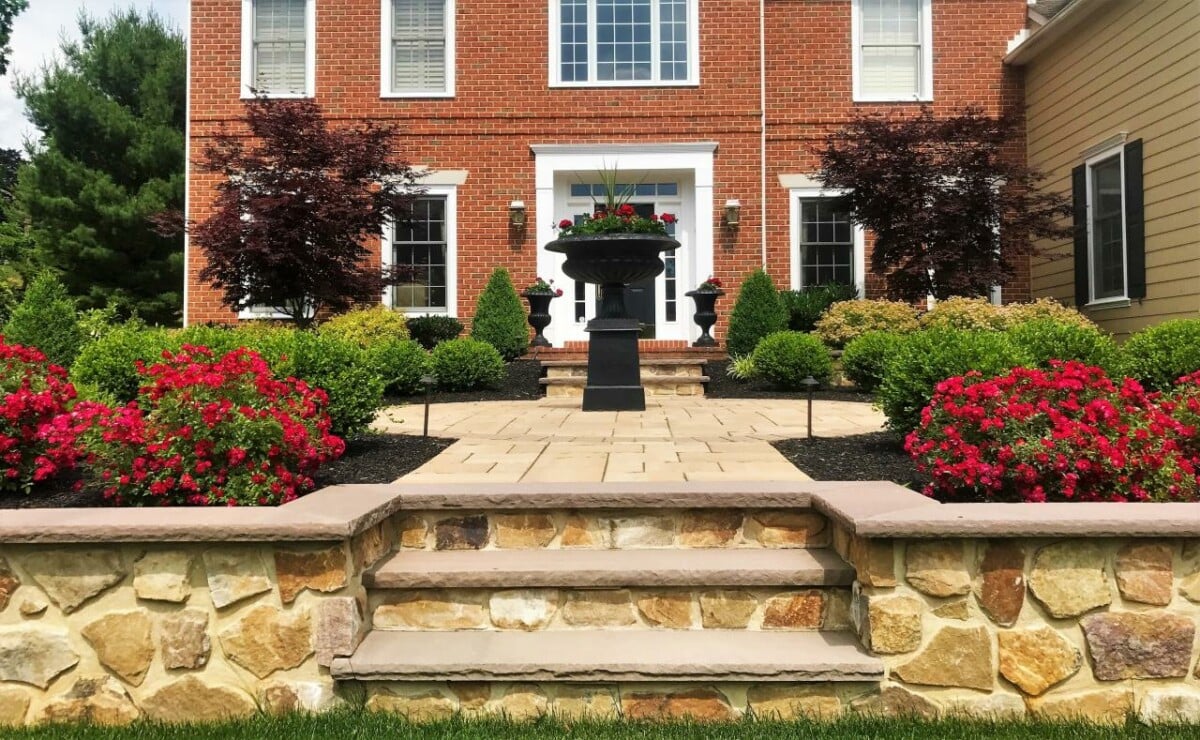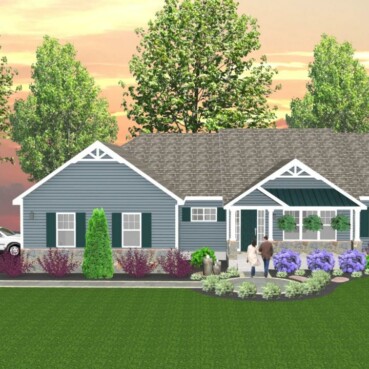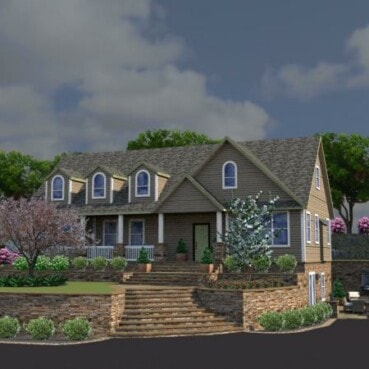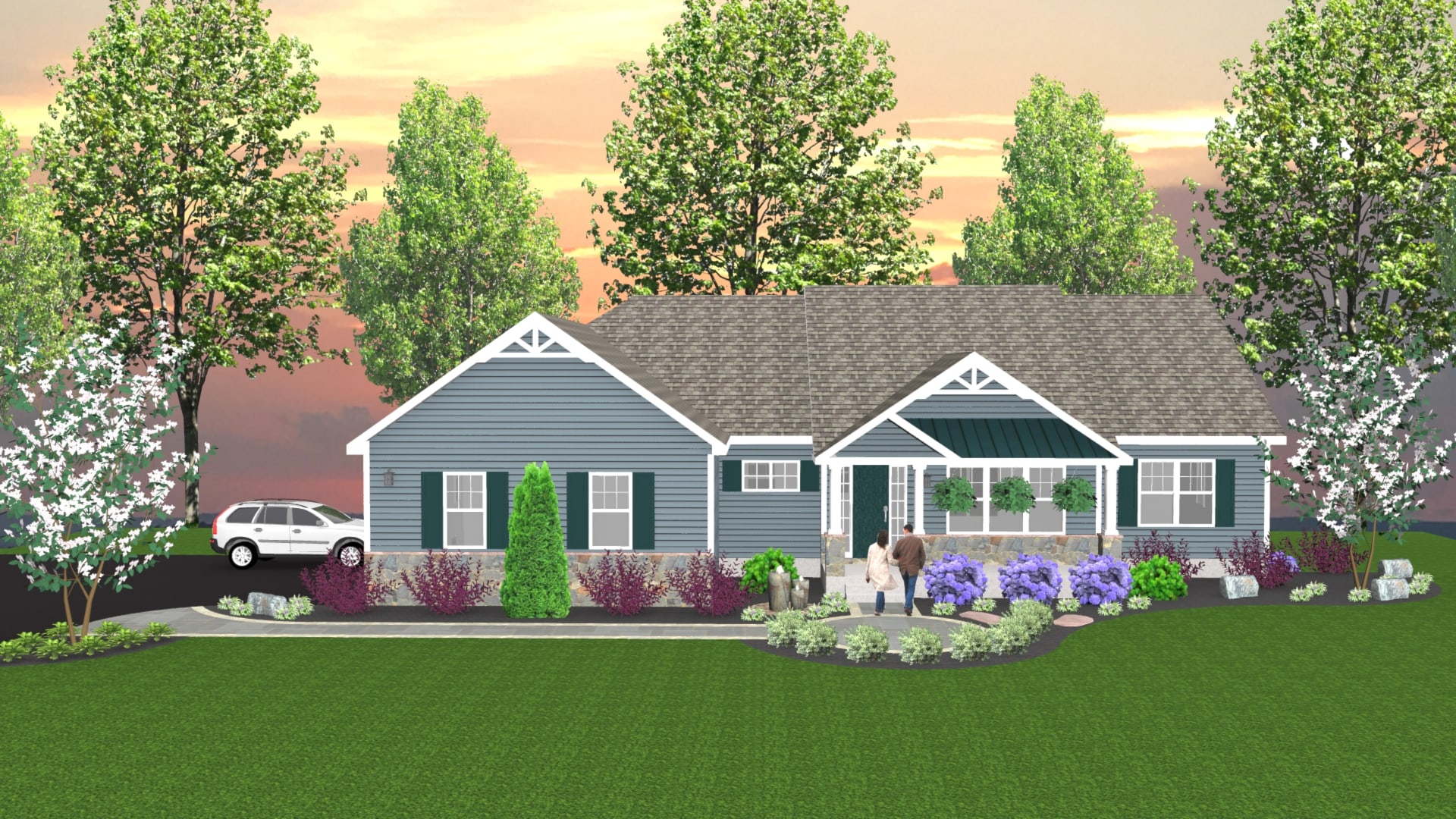Let’s face it….your home would look bare without foundation plantings. Good foundation plantings (beds of plants installed along the base of a house) can enhance a home by using different textures, contrast and color. These plantings are considered the cornerstone of every well landscaped property and can greatly improve your home’s curb appeal and welcoming feeling. Here are 2 Tips to Make Your Landscape Beds Attractive and Low Maintenance
Foundations Planting Areas

Formal foundation in Malvern, PA
Front Entrance Plantings – From the curb, your main focal point is the front door. Since your front door has the viewer’s attention, use symmetry with plantings that are the same on either side. This could also be accomplished through the use of urns and container plantings. The overall height shouldn’t overpower the front door and having evergreens provide interest year-round.

Dwarf plants stay below the windows but something taller in between.
Corner Plantings – The two corners of your home can handle taller plantings but consider the scale in relationship to the height of your house. If your house is one level, definitely some height will break up the horizontal structure and if your home is particularly tall compared to the width, a smaller, horizontal planting can minimize the vertical lines.
In-Between Plantings – The plants that connect the gaps between the front entrance plantings and corner plantings should blend between the entrance and corners.
General Tips for Plant Selection and Placement
Pay close attention to the mature size of the plant. Pick the sizes that will fit the places you are planting in, so that the plants don’t outgrow them. Dwarf varieties need little pruning. It’s obvious that short plants under windows and taller plants where their height will fit.
Additional Reading: Compact Evergreen Shrubs for Your Yard
Additional Reading: 8 Best Compact Shrubs for a Sunny Yard
Plant your good-sized shrubs with their mature foliage at least 2 – 3 ft. feet away from the house. Smaller plants can be a bit closer.
Layer the plantings with tallest plants in the back of the bed, while the shorter ones in front. The use of annuals and perennials in front of the taller foundation plants will add more color interest.
When space is limited, straight beds are most practical but curved beds provide extra room for boulders, water features and varying plant heights. As a general rule, plan for a 6’ to 8’ deep bed.
When choosing plants, your goal should be a nice mix of evergreens, deciduous shrubs, ornamental grasses, and perennials with perhaps a greater % of evergreens to ensure your foundation plantings look good all year round. Also pay attention to the plant’s light requirements.
Different textures can also offer visual interest. Needled evergreens offer a different texture from Rhododendrons and Cherry Laurels. Try to include a variety of plants that bloom in spring, summer, and fall.
In your planting design, use foundation plantings in groups of three or more. If your home is not wide, you may use all the same shrubs in the background and introduce color and interest in the front layer. Single shrubs are fine here and there.

Related: Front Yard Landscape Design for Your Home
Done correctly, your front foundation landscaping can enhance and frame your home. Bad landscaping (improper plant selection and placement) can diminish the beauty of your home. And proper walkway design gives enough horizontal space so the shrubs do not get crowded.
Whitehouse Landscaping has been creating beautiful landscapes in Montgomery and Chester counties for over 20 years and if you’re interested in sprucing up your front foundation, contact us for a free consultation or give us a call at 484-300-4290. Our design experience and horticultural knowledge in landscaping and hardscaping can create an outdoor space that is beautiful, distinctive, livable and sustainable.

